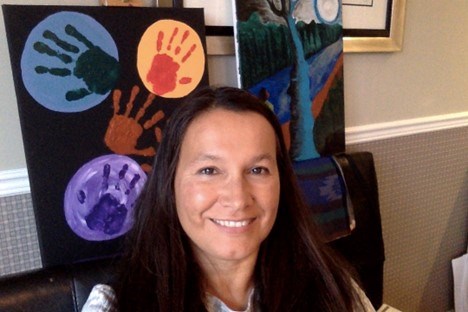THUNDER BAY—In honour and recognition of Indigenous History Month, Ontario Native Woman’s Association, welcomed Dr. Kathy Absolon to a virtual book launch, during which she spoke about her latest work: Kaandossiwin: How We Come to Know Indigenous re-Search Methodologies.
The virtual book was launched with a traditional drumming and singing ceremony and took place, June 8 at 1 p.m. Moderator for this presentation was Andre Morrisseau, from Nishnawbe First Nation, communications manager, for ONWA, who works out of their Toronto based office.
The virtual session began with an acknowledgement from Andre Morrisseau, who began by saying, “I would like to acknowledge the importance of the land that we each call home.” He encouraged each participant to pause as they took a moment of reflection. “Let us also acknowledge, the effect of residential schools and colonialism on Indigenous families and communities and to consider how we are, and can each in our own way, try to move forward in a spirit of reconciliation,” said Morrisseau.
From that moment it became clear that the spirit of reconciliation and collaboration was to be one of the backdrops for this gathering, coloured with Indigenous traditions and spirituality.
Tina Armstrong, knowledge keeper, then offered up an opening prayer. As she prayed, she took tobacco and placed it in her left hand, a spiritual gesture meant to be a method of cleansing and a means to offer thanks. She ended the prayer by saying, “This is the way I have been taught, you know to always have my tobacco and always have my little dish of berries with me and so I have one for water.” Later in the presentation, the significance of berries would be explained.
As a grandmother her role traditionally is seen as a translator and interpreter for her community and people. Absolon later too, made this an important theme, that is, to acknowledge and thank those who have come before them, the parents, the children, the communities, who brought them through a journey to where they find themselves today.
As the session continued, Ingrid Green, director of research and evaluation, spoke about how this was the first event of its kind, and one to celebrate Absolon’s work and also how her people have to know.
In her words she described the guest of honour, Absolon as one who is training all Indigenous women in research methodology. “Dr. Absolon is the maker of this impactful change for our families, communities and people," said Green.
Absolon author of Kaandossiwin: How We Come to Know Indigenous re-Search Methodologies, began her book launch and presentation by describing the journey that brought her to where she is today. Absolon lives in Kitchener, where she teaches, having only received a copy of her new book, Tuesday.
She described how it was with the support of her family, community, and those who came before her, that taught them how to take things one step at a time. “It’s like one beat of the time, you know, those of you that make things, you know, one step at a time. And then, you work on it and then you see it done." said Absolon.
Her journey began 15 years ago, when she began her search about how Indigenous Peoples have their way of doing. A journey that helped her get to know “Kaandossiwin-truth-honesty-berry picking-gather-searching." She shared how she came to know and how her people search Indigenous knowledge.
As she continued her presentation, she described the significance of the cover of the book. Absolon chose a young Anishinaabe artist to design the cover. Each part of the design held symbolic significance. The cover in her words, “Represents Indigenous Peoples who have come through Colonialism and the racism and colonial violence, and we continue to emerge and the seeds we come from are real," said Absolon.
The image of the flowers, petals, and berry seeds each held traditional Indigenous meaning. For example, she described how the dots represent the seeds and roots the “Ancestral roots that we come from are emerging," described Absolon. The flowers symbolized the central brain work of the book authored by her, while each pedal represents, “The vibrancy of who we are the beauty of our Anishinaabe intelligence,” continued Absolon.
Then Absolon compared what the book is what it is not. She made it clear that the book is not about a formula for how to go forward in Indigenous searching, that it is not a “prescription” and that it is not, “A general representation of all Indigenous methodology,” she said. Her words were clear and direct, as it was clear she wanted to differentiate clearly about what the book truly is.
In her view, the book is about engagement and knowledge seeking, a knowledge to help one understand the life between humans, the creator and creation. Her second edition represented "layers" of learning and researching. Absolon expressed how her journey to writing this book was also a collaboration with Indigenous Masters students, who helped her move from one stage of knowing to another.
In some of her final comments, Absolon, indicated that the second edition of her book, provided her with the opportunity to articulate her journey and the things that at times got in her way.
As she continues her journey, her hope is to make what she articulated as, “the invisible--visible.”
The virtual book launching was a gathering of Indigenous thoughts, traditions, language and culture in a way that helped enlighten the participants about the journey Absolon continues to travel. It is a journey where she is on a trail founded on her new search for the truth.



